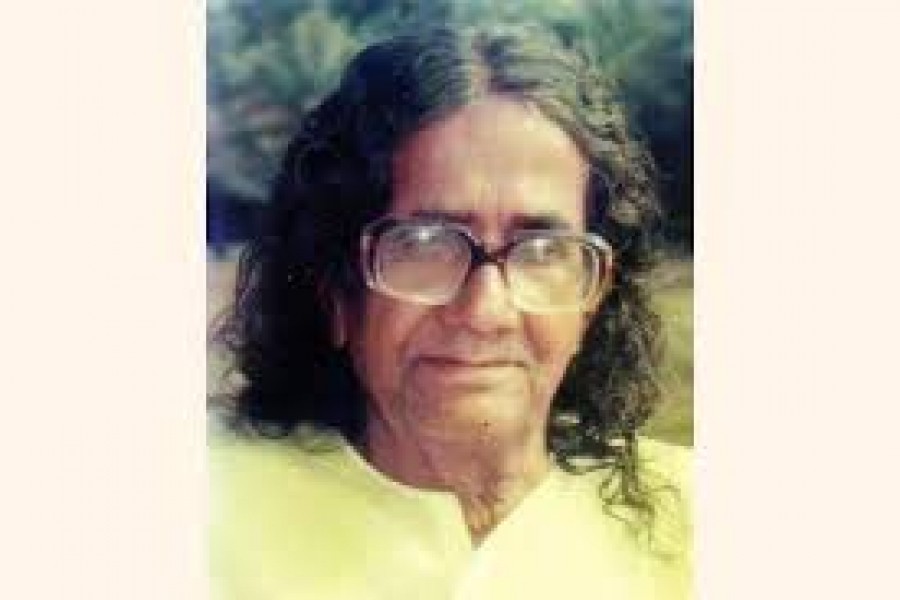Tuesday (Tuesday) marks the 97th birth anniversary of renowned artist SM Sultan. He was born at Machimdia village in Narail sadar upazila on this day in 1924.
Celebrating the birth of the eminent art genius, the Narail district administration and SM Sultan Foundation are jointly observing the day with a handful of events.
Due to the ongoing pandemic situation of Covid-19, the birth anniversary of this great artist is being celebrated on a limited scale with due dignity through various programs initiated by the district administration and SM Sultan Foundation, Narail, according to the media cell of the Narail district administration.
The programmes included recitation from the holy Qur’an, placing floral wreaths at the grave of the artist, a prayer session and a discussion on the life of the artist, organized at the SM Sultan Complex on Tuesday morning.
Mohammad Habibur Rahman, Deputy Commissioner of Narail, laid a floral wreath at the legendary artist’s grave, on behalf of district administration and Artist SM Sultan Foundation, Narail. Tributes were also paid by various governmental and non-governmental social and cultural organizations including District Police, Narail Press Club, District Shilpakala Academy, Sammilita Sangskritik Jote and more.
Widely revered as one of the pioneer artists in South Asia, SM Sultan received many prestigious awards including Ekushey Padak, Bangladesh's highest civilian award for contribution in the field of arts, in 1982, Bangladesh Charu Shilpi Sangsad Award in 1986 and Independence Award in 1993, to name a few.
Born as Sheikh Mohammed Sultan, he began drawing and painting during his childhood. He received five years of primary education at Victoria Collegiate School in Narail but was unable to continue school due to poverty and began working for his father, who was a mason.
He then went to study art at the Government College of Art in Kolkata in 1938 after Dhirendra Nath Roy, the then art-enthusiast zamindar of the Machimdia village, became his patron.
He met poet and art critic Hasan Shahid Suhrawardy, the brother of former Prime Minister of Bengal (1946-1947) and Pakistan (1956-1957) Huseyn Shaheed Suhrawardy, who restyled him SM Sultan and offered him accommodation in his home and the use of his library. Sultan did not meet the admissions requirements of the Government School of Arts, however, managed to get in with the help of Suhrawardy in 1941.
However, academic life failed to attract him and he finally decided to leave the college in 1943, halfway through the six-year course. He then travelled around India and earned his living by drawing portraits. His first exhibition was a solo one in Shimla, India, in 1946.
He then went on travelling to the United States, England and Pakistan, participated in several art exhibitions and taught as an art teacher in Karachi. After living for a while in Kashmir, he returned to his native Narail in 1953.
He settled down in an abandoned building overlooking the Chitra River, where he lived with an eclectic collection of pets and far from the outside art world for the next 23 years, developing a lasting reputation as a bohemian.
Sultan is widely considered as one of the four pioneers of Bangladeshi modernism, along with art maestro Zainul Abedin, Safiuddin Ahmed, and Quamrul Hassan. According to the art critics, Sultan's drawings, such as his self-portrait, are characterized by their economy and compactness.
Many of his paintings are themed on nature and the rural landscape, and he is well known for his canvases populated with robust male and female peasants. His watercolour paintings, predominantly landscapes, are bright and lively, with vivid descriptions of Bengali rural culture and lifestyle. His paintings never included urban elements or anything produced by modern technology, according to art historians.
Bangladesh Shilpakala Academy (BSA) organized Sultan’s first solo exhibition in 1976, which was his first major exhibition in Dhaka. He established the Kurigram Fine Arts Institute at Narail in 1969 and another art school, now named Charupeeth, in Jessore in 1973.
In 1989, late filmmaker Tareque Masud directed a 54-minute documentary film on Sultan's life, titled ‘Adam Surat’ (The Inner Strength). Masud started filming it in 1982 with the help of the painter and travelled with him all around Bangladesh.
Renowned photographer Nasir Ali Mamun published a book titled ‘Guru’ in 2005, with 68 photographs of Sultan. These were selected from thousands of photographs taken by Mamun in the period from 1978, when he first met with Sultan, until his death.
SM Sultan passed away at the Combined Military Hospital in Jashore on October 10, 1994. He was then buried at the yard of his own house in Narail.
In honour of the great artist, BSA introduced the 'SM Sultan Gold Medal' after his death, an award for honouring excellence in art and painting, reports UNB.


